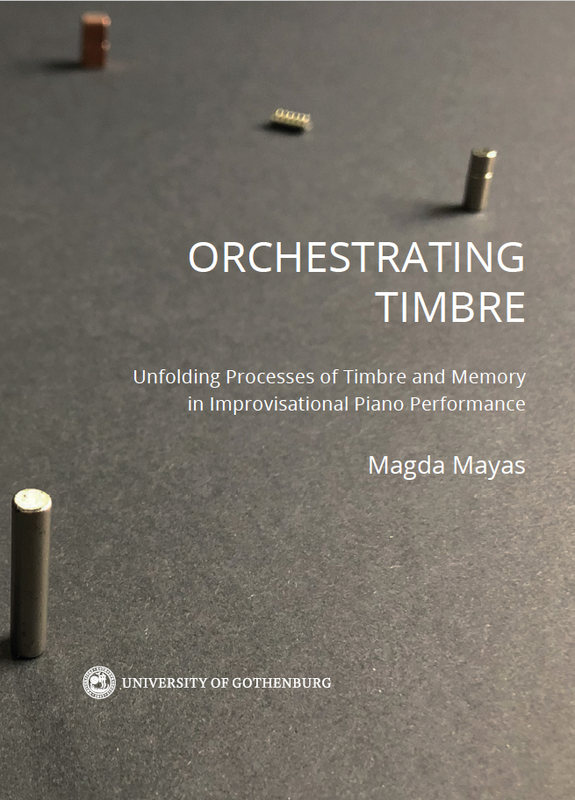"This doctoral thesis presents how the orchestration of timbre is investigated from a performer’s perspective as means to “unfold” improvisational processes. It is grounded in my practice as a pianist in the realm of improvised music, in which I often use preparations and objects as extensions of the instrument. As practice-based research, I explore multiple, combined, artistic, and analytical approaches to timbre, anchored in four of my own works. The process has also involved dialogues and experimental collaborations with other performers, engineers, an instrument builder and a choreographer. It opposes the notion of generalizable, reproducible, and transferrable techniques and instead offers detailed approaches to technique and material, describing object timbre, action timbre, and gesture timbre as active agents in sound-making processes. Whilst timbre is often understood as a purely sonic perceptual phenomenon, this view does not accord with contemporary site-specific improvisational practice; hence, the need to explore and renew the potentiality of timbre. I introduce and argue for an extended understanding of timbre in relation to material, space, and body that embraces timbre’s complexity and potential to contribute to an ethical engagement with the situated context. I understand material, spatial, and embodied relations to be non-hierarchical, inseparable, and in constant flux, requiring continuous re-configuration without being reduced or simplified. From a performer’s perspective, I define “orchestrating” timbre as the attentive re-organization of these active agents and the creation of musical structures on micro and macro levels through the sculpting and transitioning of timbre—spatially, temporally, physically, and mentally—within a variety of compositional frameworks. This requires recognizing the multiple and complex roles that memory plays in contemporary improvisational practice. I therefore introduce the term timbral memory as a strategic structural, reflective, and performative tool in the creation of performing and listening modes, as integrated parts of timbre orchestration. Reaching beyond the sonic, my research contributes to the field of critical improvisation studies. It addresses practitioners and audiences in music and sound art, attempting to also constitute a bridge from artistic research in music—often viewed as a self-contained discipline—into multiple artistic fields, to inspire discussions, creation and education." Magda Mayas


